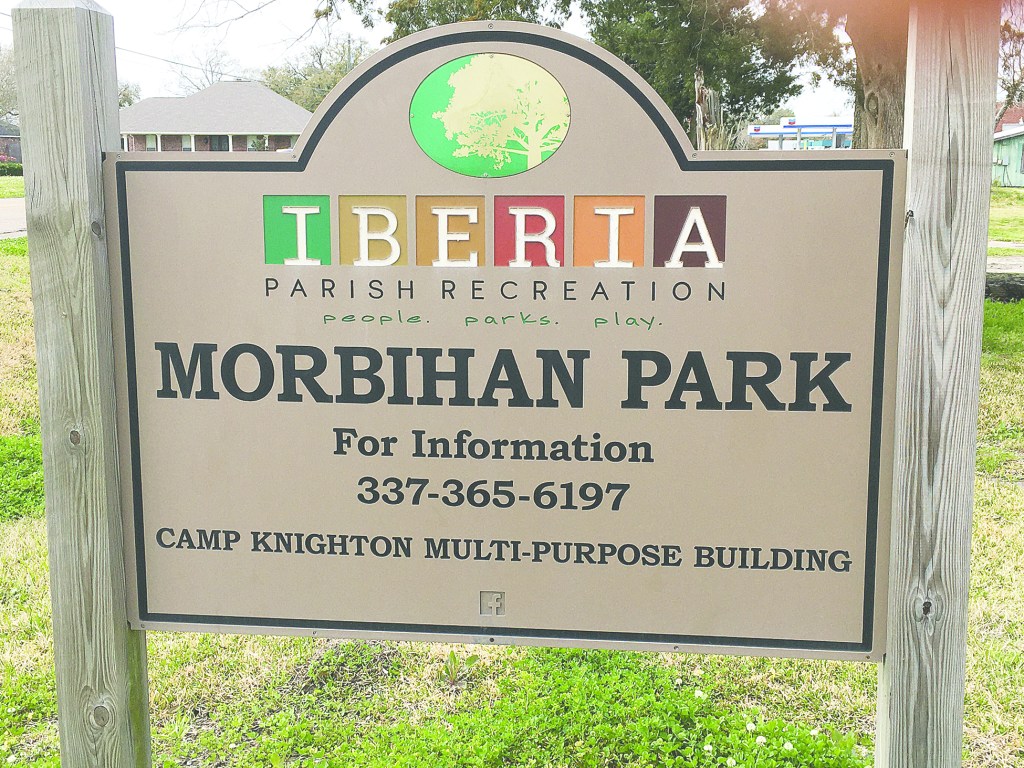Camp Knighton Road — Street with a C home to Kamp with a K. And an Obelisk.
Published 7:15 am Sunday, March 14, 2021

- Camp Knighton Road ends at Morbihan Park, run by the Iberia Parish Recreation Department.
Not many New Iberia streets can boast an obelisk, but there’s one on Camp Knighton Road in Morbihan, between New Iberia and Loreauville.
The historic road once led to Kamp Knighton, an “educational and religious” camp for African-American youth and adults in the early 20th century. The obelisk, visible from Loreauville Road, is dedicated to the namesake of the camp, Rev. W. Knighton Bloom. The inscription on the obelisk’s plaque names him as Friend of Man, 1866-1934. It is the last vestige of the Kamp Knighton of days gone by.
According to “History of Black Congregational Christian Churches of the South” by J. Taylor Stanley, the Kamp Knighton Louisiana Conference was founded in 1925 by Rev. Edward H. Phillips, a missionary preacher and veteran of the Spanish American War. He served as its sole director until his death in 1949. There was also a school in New Orleans named for Phillips, Edward H. Phillips Junior High, which closed in 2012. Phillips named the camp for Bloom, extension secretary of the Congregational Sunday School Extension Society, who provided support and financial ‘encouragement’ for the project.
According to longtime Morbihan resident Eddie Chretien, the camp was not the only thing Phillips contributed to the community.
“Reverend Phillips was the first to bring electricity to Morbihan, and he also brought 10 or 12 families from the farm across the bayou, got them to buy property and live on this side,” Chretien said.
He remembers the camp as “very nice. There was a house for the preacher on the grounds, a dormitory building and a concession stand. They brought in a Black construction company from New Orleans, they built all of the buildings. The grounds were beautiful, too. There were plants and trees planted down the road from the highway (Loreauville Road), and magnolia trees, all kinds of trees in between the buildings. The trees had plaques on them, saying who had donated them.”
In the Tulane University archives, the camp is described as a training center for children and adults in religious education and a center for idealism for the community.
“The Congregational Church would come here to hold their conferences every summer, and stay for ten to fifteen days. Occasionally,they’d hold another meeting here as well,” Chretien notes.
The camp was supported by the Louisiana Congregational Conference and later the Plymouth Conference of the Southeast.
Interestingly enough, spelling also plays a role in the history of this street. Although the camp was always known as Kamp Knighton, the street has always been known as Camp Knighton Road, substituting C for the original K. Besides the obelisk, there’s currently one home on the road, which dead ends into Morbihan Park. The park is operated by the Iberia Parish Recreation Department and features a general purpose building, playground equipment, a basketball court, and restrooms.
Founded: in 1924.
Speed Limit: 15 MPH
Length: just over 1/10 of a mile.





